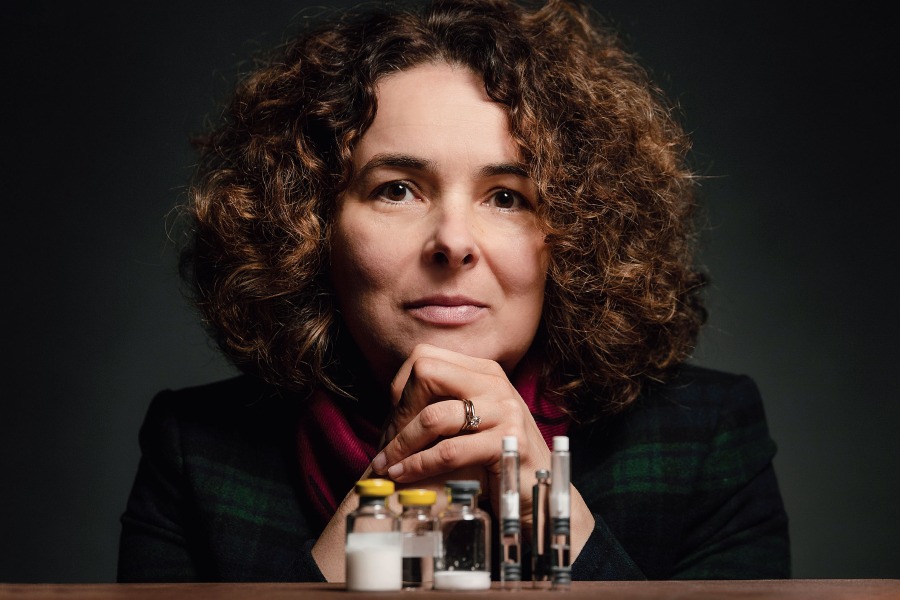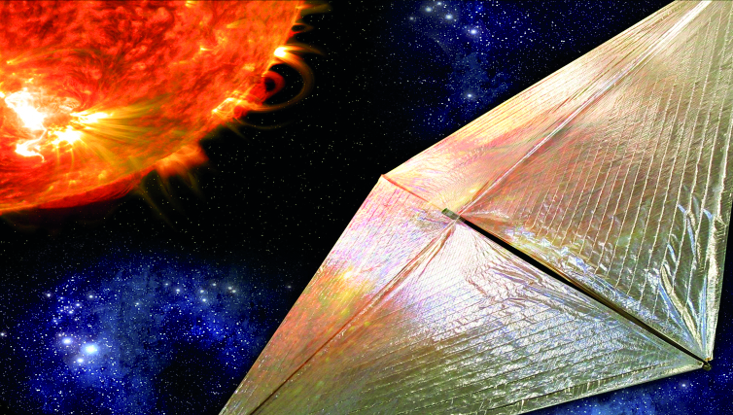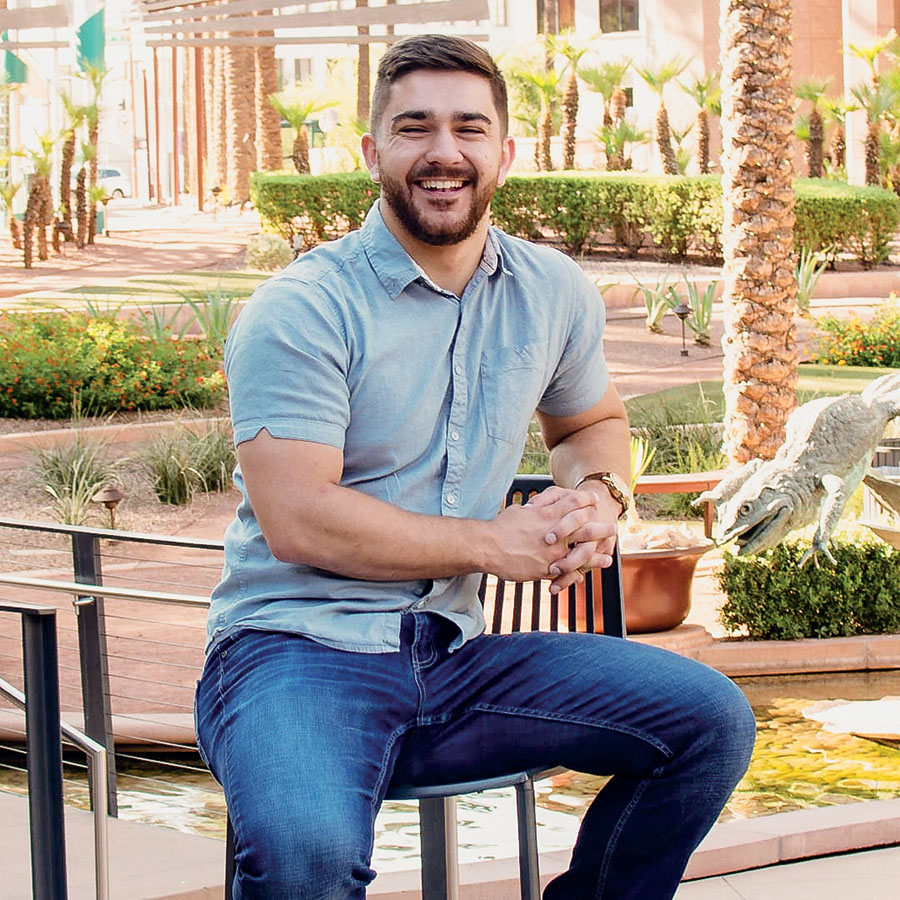
Students across Purdue’s College of Engineering are contributing to the largest solar sail project ever to be deployed. Solar sails have the potential to provide a new type of propulsion, one that uses no fuel, for many types of space missions.
"Solar sails are large, mirror-like structures made of a lightweight material that reflects sunlight to propel the spacecraft," says Les Johnson, principal investigator for the NASA Solar Cruiser. "The continuous solar photon pressure provides thrust with no need for the heavy, expendable propellants used by conventional chemical and electric propulsion systems."

Alina Alexeenko, professor of aeronautics and astronautics
Johnson says the Solar Cruiser mission will have a sail approximately 51 times larger than LightSail 2 – itself an active mission, launched in 2019, that also saw Purdue contributions.
Solar Cruiser will carry an enormous, four-section sail with a total surface area of 1,653 square meters. That size and its role as a deep-space spacecraft differentiates it from prior, smaller solar sails that have remained closer to Earth.
"The Solar Cruiser’s propulsive performance will enable future science missions that can study the sun from novel vantage points that cannot be reached by any other spacecraft propulsion system," Johnson says.
Alina Alexeenko, professor of aeronautics and astronautics, says that, once launched, the spacecraft will head to the libration point between the sun and the Earth — the distance where the gravity between the two bodies is equal. It will use the sail’s propulsive force to maintain that relative position.
This mission will demonstrate and provide data on how a solar sail can work to navigate a spacecraft outside of Earth’s orbit, among other goals, marking a path for developing future solar sails.
Future sail-equipped spacecraft can provide increased notice of solar storms, which would give satellite operators as well as space explorers more time to take precautions against damage, Johnson says. "A Solar Cruiser solar sail could increase the warning times of solar storms by up to 50%."

The Solar Cruiser will demonstrate solar sail propulsion by flying sunward of L1 and maintaining its position along the Sun-Earthline using only reflected light for propulsion.
The sail’s deployment, as well as its behavior during use, will need to be monitored closely in order to understand how the material will perform in future missions. That’s where Purdue’s Solar Sail Vertically Integrated Projects (VIP) Program is providing important contributions.
NASA’s design of the Solar Cruiser incorporates a camera with multiple, overlapping fields of view of the sail. Andrew Binder (BSAAE ’19), a graduate student in aeronautics and astronautics, is leading the VIP students this year in devising and testing methods for monitoring the topography of the sail to determine its effectiveness.
But in space, nothing is easy. In this case, the camera will be looking almost directly across the sail.
"You get one camera, it’s about a yard off the plane of the sail, and it’s got to be able to study this football-field-sized area around it. Which is a hell of a problem," Binder says. "You’ve got a very shallow angle of incidence on this solar sail, and the question is, can you learn anything from that?"

Andrew Binder (BSAAE'19), a graduate student in aeronautics and astronautics, is leading the students in Purdues Solar Sail Vertically Integrated Projects (VIP) course.
Previous work in studying solar sails has either involved sensors along its surface, or with dots along the sail to aid in visual processing. Those approaches have major disadvantages. "If you think of a piece of rice paper, it’s pretty consistent with how fragile and delicate these solar sails are. If you apply a sticker to it, it’s going to affect how it folds and how it moves," Binder says. "It’s really important that the solar sail behaves well, because you’ve not only got to deploy it, but it has to be as light as possible because the force you’re getting from the sun is not especially strong."
The challenge placed before Purdue students is to monitor the sail without sensors or visual keying. The approach Binder is pursuing with the students in the VIP course, and oversight from Alexeenko, is to stitch images together from that camera’s viewpoints to determine the shape of the sail.
"If you take a panorama shot with your phone, it takes a bunch of images and compiles them together into one shot. There are similar things you can do for three-dimensional surfaces. You could take a bunch of pictures of a desk and stitch them together to create a 3D model of your desk," Binder says. "You can do something very similar with solar sails."
Binder returned to Purdue in 2022 after a meeting with Alexeenko, and the Graduate BRIDGE Program provided the support system for his return to campus after three years working in the commercial space industry.
BRIDGE is a summer program designed for incoming graduate students from underrepresented demographics — Binder is Native American, from the Chitimacha Tribe of Louisiana. The program provides a series of research and professional workshops, and fosters a participant peer network.
Binder used that summer opportunity to get a head start on his research with Alexeenko, devising a framework for testing various photogrammetry techniques on solar sails. Even though Solar Cruiser has been pushed back from its expected launch date in 2025, the project is still active, and Binder is excited about the work to be done.
"We have an apparatus to do some mock solar sail deployments. The students are going to get a camera, and try to replicate the light conditions. We have this modular wall painted black, to try to simulate the space environment. And, of course, there’s all the software photogrammetry work," Binder says. "Even with it being on pause, we have plenty we can still do. We will continue collaborating with our colleagues at NASA Marshall to make sure their needs are met."
Thinking about the semesters ahead, Binder laughs. "It will certainly keep us busy."